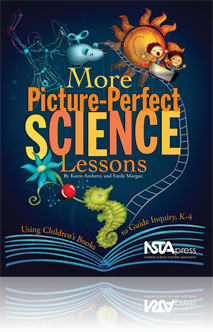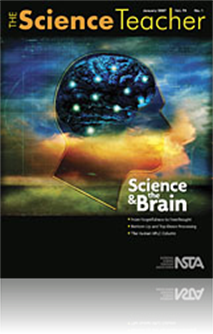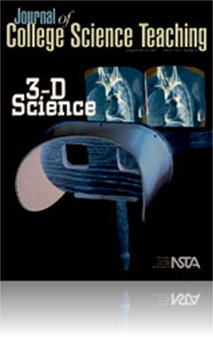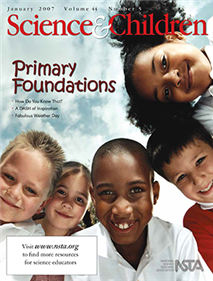All Resources
Book Chapter
At the end of the first chapter, you realized, hopefully, that the model of an atom that we have so far (Rutherford’s model of a concentrated positive nucleus with negative charges around it) doesn’t go very far in helping us explain observations...
Book Chapter
In thinking about a title for this chapter, the word periodicity came to mind. I was sure this had some kind of pop culture reference. After discussing this with my wife, we figured I was thinking of synchronicity, which is a reference to music b...
Book Chapter
Let’s Get Together … Yeah, Yeah, Yeah
Ah yes, the theme song from one of the strangest movies of all time—Parent Trap. The original, that is, with Hayley Mills. I was in love with her back then. So naturally, I would choose that phrase to title a chapter on how atoms combine to form mo...
Book Chapter
We now know enough about atoms and how they combine to investigate a number of different chemical reactions. We’ll even be able to represent those reactions with symbols that tell us how many of each kind of atom we begin with and how many of each ...
Book Chapter
The word organic has lots of meanings in everyday life. Organic vegetables are ones grown without pesticides and organic beef comes from cattle that haven’t been given antibiotics. When it comes to chemistry, organic sometimes means something el...
NSTA Press Book
Chemistry Basics: Stop Faking It! Finally Understanding Science So You Can Teach it
Do the words “periodic table” send chills down your spine? Are you anxious about atomic structure? Confounded by chemical equations? Relax! The cure for chemistry confusion is within reach, courtesy of this newly available book in the Stop Faking...
By William C. Robertson, Ph.D.
NSTA Press Book
More Picture-Perfect Science Lessons: Using Children’s Books to Guide Inquiry, K-4
Teachers raved when NSTA Press published Picture-Perfect Science Lessons .* They loved its lively mix of kid-magnet books, Standards-based science content and ready-to-teach lessons. So what could be more perfect? More Picture-Perfect Science Lesso...
By Karen Ansberry, Emily Morgan
eBook
More Picture-Perfect Science Lessons: Using Children’s Books to Guide Inquiry, K-4 (e-book)
Teachers raved when NSTA Press published Picture-Perfect Science Lessons in 2005.* They loved its lively mix of kid-magnet books, Standards-based science content and ready-to-teach lessons. So what could be more perfect? More Picture-Perfect Scien...
eBook
Chemistry Basics: Stop Faking It! Finally Understanding Science So You Can Teach it (e-Book)
Do the words “periodic table” send chills down your spine? Are you anxious about atomic structure? Confounded by chemical equations? Relax! The cure for chemistry confusion is within reach, courtesy of this newly available book in the Stop Faking...
Journal Article
Because supplies are limited in many classrooms, opaque film canisters can be used in a number of scientific inquiry activities, including a “black box” activity and several activities on sinking and floating properties related to density and to ...
Journal Article
The use of portfolios has had a positive impact on students, faculty, and the program in the Chemistry Department at Berea College. The portfolio allows for the inclusion in the curriculum of activities that occur outside of the classroom and offers ...
Journal Article
Understanding cyclic patterns and distinguishing them from other patterns is critical to understanding the Earth and beyond. Whether you are discussing star cycles, rock cycles, life cycles, or carbon cycles, this is the stuff of science. It is a fun...
Journal Article
The Early Years: Light Foundations
The day-and-night cycle forms the basis for understanding many other natural cycles in plants, animals, and Earth processes, as well as later learning about the solar system, and it is part of the National Science Education Content Standard D, Earth ...
Journal Article
Methods and Strategies: Discussion Maps Make Sense!
One warm spring day, a group of 18 young children sat in a classroom discussing their ideas about plants. This was one of several discussions in a multi-age, grades 1–3 classroom in which the children were talking about living things. The plant dis...
Journal Article
Children do not have to live near the coast to experience effects of water waves. They can throw stones into a pond and see the waves ripple outward, bob up and down while floating in a swimming pool, and splash water about while in a bathtub. As stu...







